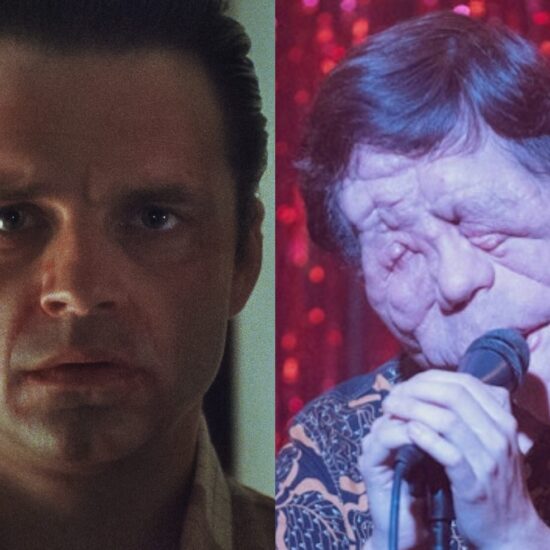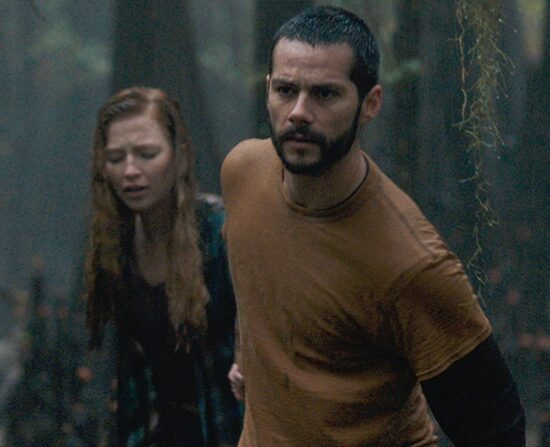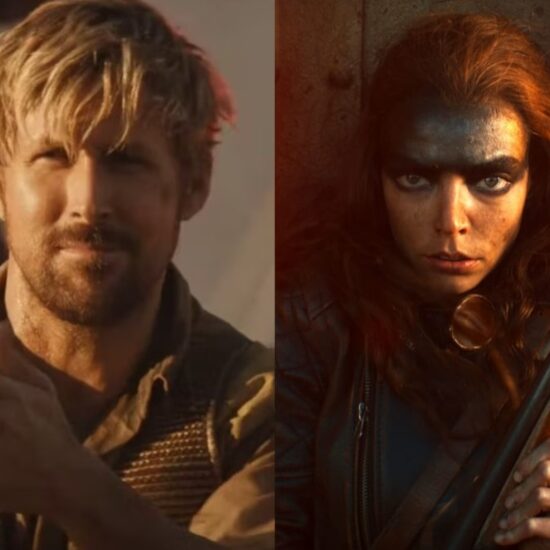
‘Halloween’ (1978)
When people ask me what my favorite horror movie is, John Carpenter’s groundbreaking shocker comes out on top. Jamie Lee Curtis plays a high schooler who gets stalked on Halloween night by an escaped lunatic named Michael Myers. Today it sounds like any old horror movie. But Carpenter was prophetic with narrative choices that horror now takes for granted: a masked killing-machine villain, a strong-willed final girl next door, creatively depicted deaths, touches of dark comedy. (And a score that sounds like a chase.) Together they make “Halloween” my top Halloween treat.
‘The Exorcist’ (1973)
American filmgoers’ heads spun when the director William Friedkin unleashed his shocking film in theaters the day after Christmas. Based on William Peter Blatty’s novel, it’s about a woman (Ellen Burstyn) who’s so desperate to save her possessed 12‐year‐old daughter (Linda Blair) that she enlists priests (Jason Miller and Max von Sydow) to perform an exorcism. It’s not just any demon they’re up against, but a potty-mouthed, vomit-spewing, blasphemy-happy entity that repulsed audiences. (A theater guard told this newspaper that the film had caused heart attacks and perhaps a miscarriage.) “The Exorcist” was a hit that defined the modern possession movie.
‘Friday the 13th’ (1980)
While “Halloween” paved the way for the slasher’s golden age in the 1980s, it was Sean S. Cunningham’s “Friday the 13th” that made summer camp one of horror’s most abiding deadly destinations. (It also helped Hollywood realize that building a slasher franchise around a masked killer could lead to box office gold.) Gory and darkly comical, the film is about a killer who knocks off counselors (including one played by a young Kevin Bacon) at a summer camp where a boy named Jason Voorhees died in the 1950s. With 12 films (so far), the franchise has turned a hockey mask into a singular brand.
‘A Nightmare on Elm Street 2: Freddy’s Revenge’ (1985)
The original “Nightmare on Elm Street” is an important modern horror film, and one of the best of the 1980s. But Jack Sholder’s sequel is my favorite because it’s a forthrightly queer film in a genre with a shamefully homophobic past. Robert Englund returns to play the nightmare-stalking, sweater-wearing Freddy Krueger, only this time he haunts the suburbs’ queer spaces: what in the ’80s we called an “alternative” bar; a high school shower room; and the body of a sexually anxious final boy, tenderly played by Mark Patton, the subject of the eye-opening documentary “Scream, Queen!” Blessedly, the gayness here is text, not subtext.
‘Get Out’ (2017)
Jordan Peele’s ingeniously written, intensely unnerving thriller follows in the footsteps of “White Dog,” “The People Under the Stairs” and other horror films about that old devil next door: American racism. What’s singular about Peele’s film is how it skewers the lie of a post-racial America that the Obama presidency supposedly ushered in. Daniel Kaluuya is unforgettable as a Black man who travels with his white girlfriend (Allison Williams) to her family’s suburban estate where, through a series of creepy microaggressions and forced hypnotic states, white people are revealed “as insatiable predators of Blackness,” as The Times’s Wesley Morris put it.
‘The Blair Witch Project’ (1999)
I had no idea what I was getting into when I watched this film alone at a sold-out theater. Social media wasn’t a thing then, and for days I couldn’t figure out if it was a documentary or not. What it turned out to be was a game-changing film that popularized a new form of horror: found footage. (It wasn’t a totally novel concept; “Cannibal Holocaust” tried it in 1980.) Daniel Myrick and Eduardo Sánchez’s fictional film is made up of the supposed footage that three young documentarians took in the Maryland woods before mysteriously disappearing. The final minutes get my vote for the scariest horror movie ending.
‘Ringu’ (1998)
The urban legend goes like this: You watch a videotape. You get a phone call. A week later you die. Be on the lookout for the long black-haired girl in a white dress who walks funny. Hideo Nakata’s bleak, barely gory slow-burn haunting film was a hit in Asia, and spawned several other movies that helped usher in the cinematic movement that became known as J-horror. Hollywood noticed, greenlighting J-horror remakes that, in the case of “The Ring” (2002), were actually good.
‘Nosferatu: A Symphony of Horror’ (1922)
If you’re curious to experience silent-era horror, F.W. Murnau’s enduring vampire story is a knockout. The bloodsucker here is the lanky, rodent-looking Transylvanian Count Orlok (played with radiant evil by the German actor Max Schreck), whose nightly quests for blood are told via ravishingly expressionistic touches, including some of the most sinister shadow play you’ll ever see onscreen. Good luck getting to sleep after watching Orlok rise straight up out of his coffin or climb tall stairs, his claw-like fingers outstretched in silhouette against the wall.
I didn’t watch Bernard Rose’s horror film until the Covid lockdown months, and I kicked myself for not sooner experiencing this macabre film’s timely and timeless message about racism and class injustices. Set mostly at a Chicago housing complex, it’s about a white doctoral student (Virginia Madsen) who encounters supernatural evils as she explores the legend of Candyman (Tony Todd, magnetic), a Black man who can be summoned by saying his name five times into a mirror. Anthony B. Richmond’s cinematography and Philip Glass’s score artfully and elegantly emphasize the film’s message about Black pain.
‘Jennifer’s Body’ (2009)
The trailer for Karyn Kusama’s film makes it look like a made-for-CW monster comedy. Don’t be fooled. It’s a feminist, renegade and unsettling (and at times very funny) story about sexual assault and emotional trauma, masquerading as a high school possession killer-thriller. Guided by Diablo Cody’s take-no-prisoners script, Megan Fox shines as a beautiful young woman whose supernatural powers come with heartbreakingly human consequences. Her sexual relationship with her best friend, played by Amanda Seyfried, queers the terror. I can’t remember a horror film that made me laugh and cry with equal intensity.
‘Suspiria’ (1977)
Dario Argento’s breathless supernatural fever dream is the perfect place to start if you’ve never seen a giallo, the extravagantly macabre and impossibly chic Italian horror genre that had its heyday in the 1970s. Jessica Harper plays an American ballet student at a prestigious European dance academy, where she’s tortured by phantasmic occurrences rendered in giallo’s signature visual style: speedy zooms, jewel-toned lights, grisly deaths involving glass. The score, a collaboration between the group Goblin and Argento himself, sounds like what demons would dance to as flames engulf an Italian disco.
‘Messiah of Evil’ (1973)
Stream it on Amazon Prime Video.
Next to the final minutes of “The Blair Witch Project,” this visually stunning zombie film, written and directed by Willard Huyck and Gloria Katz, features one of my favorite scary scenes. It takes place inside a movie theater, where over the course of several brilliantly directed minutes a young woman is devoured in front of the screen by a slowly creeping hoard of demons. The film melds a “California Girls” sensibility (the Beach Boys song, to be clear) with boho fashion and depraved supernatural horror in a way that’s feminine, mesmerizing and lurid. There’s no other horror film quite like it.
‘Night of the Living Dead’ (1968)
The maverick director George A. Romero said it was an accident that his low-budget black-and-white zombie film, shot mostly at a farm in rural Pennsylvania, was about racism in America. But it’s hard to see this still very scary film as anything but about race and white supremacy. Duane Jones gives a powerful performance as what was then a horror movie rarity — a Black leading man — who tries to save a barricaded farmhouse full of scared white people from the undead clawing their way inside. The nerve-tingling opening scene is an excellent example of how to scare a lot by doing little.
‘Psycho’ (1960)
Janet Leigh’s shower scene. Anthony Perkins’s creepy stare. One character’s early exit. The final reveal. For the five of you who have never seen Alfred Hitchcock’s proto-slasher masterwork, just watch it. For those of you already familiar with it, just rewatch it. That’s all I’ve got. I’ll end with my favorite line from Bosley Crowther’s 1960 essay in The Times in response to backlash against the film’s perceived degeneracy: “What one thinks one sees in this picture is likely to be more than one does see. How much depends upon how helpful one’s imagination and sophistication are.”
‘The Wolf Man’ (1941)
Stream it on Amazon Prime Video.
Universal’s monster films from the 1930s, including “Dracula” and “Frankenstein,” kick-started my love of horror when I watched them on late-night TV in the ’80s. But for my money, George Waggner’s creepy film from an underappreciated horror movie decade — the 1940s — holds a special place. Lon Chaney Jr.’s sensitive portrayal of the title monstrous lycanthrope set the standard for the werewolf picture and its queerness. After all, werewolf movies are about (mostly) men who can’t help but transform at night into hungry somethings they don’t understand.
‘Young Frankenstein’ (1974)
Horror comedy is hard because terror and levity are uncomfortable bedfellows. Then there’s stupidity, which is what Mel Brooks does brilliantly, no more so than in this black-and-white monster movie parody. The cast is comedy gold: Gene Wilder as Dr. Frankenstein (“It’s FRAUNK-en-steen,” he softly rages); Marty Feldman as Igor, his what-hunchback? sidekick; Cloris Leachman as the stern housekeeper Frau Blücher; and Peter Boyle as Frankenstein’s monster, whose performance of “Puttin’ on the Ritz” is one of horror’s most joyously ludicrous musical moments.
‘The Texas Chain Saw Massacre’ (1974)
How can a film so sickening be such an inspiration? Yet that’s how I’d describe Tobe Hooper’s gut-puncher about a deranged family — including the chain saw-wielding Leatherface — that kills off young people who stop at the wrong house in nowhere Texas. Vincent Canby, writing in this newspaper in 1981, called the film “harmless in a way that I’m not sure that most contemporary horror films are,” and “almost chaste by the standards of today’s horror films.” It goes to show you that one person’s shock is another person’s shrug. For maximum heebie-jeebies, watch it in the dark.
‘Scream’ (1996)
I’m not a huge fan of Wes Craven’s “Scream” or its sequels. I find their meta-ness cloying, and Ghostface, its resident evildoer, looks more like a guy in a store-bought costume (which isn’t far off) than a bona fide monster. But I appreciate how Kevin Williamson’s script winked and nodded its way through horror tropes that the genre had never before really acknowledged so externally and so comically. “Scream,” ultimately, is a love letter: a horror movie about horror movies made for people who know and love horror movies.
‘Carrie’ (1976)
Brian De Palma’s lurid prom-gone-wrong horror thriller, based on Stephen King’s shuddery novel, is one of my favorite revenge horror movies. Shocking but also this side of camp, the film is a bloodcurdling joy to watch, no more so than when Carrie, played with extraordinary sensitivity by Sissy Spacek, uses her telekinetic powers to unleash a fiery hell on the high school bullies who made her life miserable and on her sex-shaming, religious crackpot mother, played with glorious fervor by the great Piper Laurie. When I hear the word “prom” all I think of is “Carrie.”
‘Rosemary’s Baby’ (1968)
Rent or buy on most major platforms.
Motherhood never looked so sinister as it does in Roman Polanski’s horror film starring Mia Farrow as a pregnant woman with a chic pixie cut who comes under the influence of a group of witches hidden away in a luxury apartment building on Central Park West. Adapted from Ira Levin’s best-selling novel, the film has an eerie blend of supernatural and devil-next-door terrors that inspired a coven’s worth of other movies, including Jordan Peele’s “Get Out” and Ari Aster’s “Hereditary.”
‘Child’s Play’ (1988)
Tom Holland’s dark comedy about a sinister but cuddly doll named Chucky launched a franchise and a television series. It’s about a killer whose spirit enters a Good Guy doll that goes on a murder spree and terrorizes a young boy, memorably played with adorable pluck by a young Alex Vincent. Like Freddy, Chucky’s appeal comes from his knack for dark humor and his thirst for butchery — a combination that’s helped the red-haired, foul-mouthed, fast-running doll join the horror villain hall of fame.
‘Creep’ (2015)
Patrick Brice’s film has almost no gore or violence. There are no creatures, hauntings or explosions. Yet this found-footage film burrowed into my skin and stayed there until its dig-your-fingers-into-the-couch ending. Mark Duplass stars as Josef, a man who says he’s dying of cancer and wants Aaron, a videographer played by Brice, to document his last days. Do yourself a favor and buckle in when you turn this one on because the trip is utterly chilling.
‘Martyrs’ (2008)
Pascal Laugier’s intense shocker, about two young women who encounter an evil underground organization with warped ideas of divinity, makes the other films on this list look like “Barbie.” It’s one of the central films of the New French Extremity, a movement from the turn of the 21st century that featured unapologetic and graphic sex, violence and death. The final, pivotal scene, in which the film’s gruesome actions are sort-of explained, left me with such a deep sense of sadness and despair that it took me days to get over it. (Mind you, for a horror geek, this is a good thing.) You’ve been warned.
‘The Blob’ (1958)
The options are plentiful when it comes to children’s horror movies, from “ParaNorman” to “Little Monsters.” But for an old-school kid-friendly creature feature, check out Irvin S. Yeaworth Jr.’s schlocky sci-fi disaster film. Steve McQueen stars as a man trying to battle an alien glob of goo that’s gobbling up a small American town. The era will look so foreign and the special effects so outdated that kids will find it to be just cartoony fun. Save questions about atomic-age anxiety and Communism for another day.
‘The Night of the Hunter’ (1955)
Charles Laughton’s stylized dark fairy tale boasts a stellar cast: Robert Mitchum as a phony money-hungry preacher, Shelley Winters as the gullible woman he marries and the silent star Lilian Gish as the gun-toting old lady who smells his con a mile away. Laughton turned the stuff of nightmares — a woman dead in a car submerged underwater, or Mitchum hurtling toward children like an ogre — into stunning cinematic dreamscapes. No other movie on this list is as diabolical as it is beautiful.













